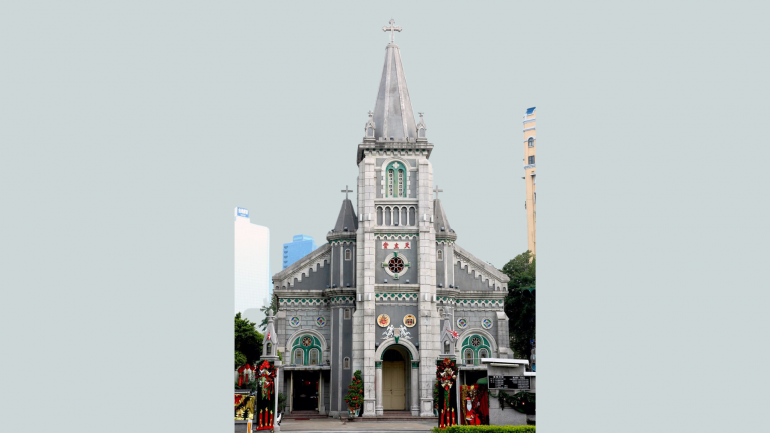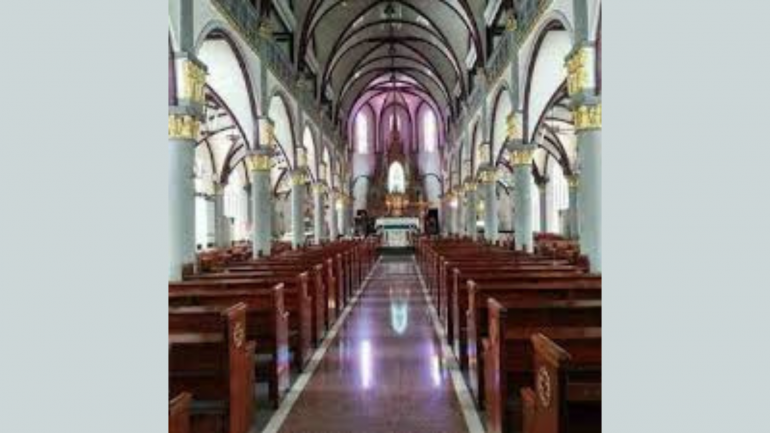Holy Rosary Cathedral Minor Basilica: A Testament to Taiwan's commitment to Religious Freedom

The faith was introduced to China by Giovanni da Montecorvino, an Italian Franciscan missionary.
Origins of Faith in China
The Catholic faith arrived in China during the Yuan dynasty, a Mongol-led dynasty established by Kublai Khan.
The faith was brought by Giovanni da Montecorvino, an Italian Franciscan missionary, who was the first missionary in China and the first bishop of Khanbaliq.
Khanbaliq, located today in Beijing, was the capital of China under the Yuan dynasty.
In 1626, six Spanish Dominican priests, including Fr. Bartolome Martinez, took part in a Spanish expedition to Taiwan, known at the time as Formosa.
In the same year, Taiwan became a Spanish colony. The Philippines was earlier colonized by Spain in 1565.
The missionaries in Taiwan and local converts acquired a site to build the church.
Taiwan belonged to the Archdiocese of Manila at the time.
Spanish missionaries in the colonial Philippines sailed to Taiwan to help build the original church.
In 1631, the original church was built in Northern Taiwan.
The cathedral was constructed in 1859 during the Qing, the last dynasty in Chinese history that lasted from 1636 to 1912.
In 1928, the church was reconstructed into its current state.
Built-in Gothic and Roman style, the features of the cathedral reminisce the interior of the Manila Cathedral.
The main entrance is tall and arched, preceding the main door. Two arched entrances flank the main one.
The side entrances were topped with a blend of arched and rose windows.
The facade has eye-riveting rich details that could drop a jaw. Its grey and dirty white texture demonstrates simplicity and class.
The interior has colorful stained glass panels and golden beams. The windows are arched and rose.
The altar was set up on a base shaped like an octagon.
Outside the structure, a large steeple stands atop the facade. A pinnacle with an arrowhead tip surrounds the steeple on four sides.
Two smaller and shorter steeples flanked the facade on either side. All three spires are topped with a cross.

Taiwan's charter guarantees freedom of religion. The country also imposes no state religion. Registration of religion is not mandatory.
Religious Freedom in Modern Taiwan
Chinese characters were inscribed immediately above a rose window with a cross pattern in the middle part of the facade.
After its reconstruction in 1995, the church was supported by seven pairs of pillars on either side of the interior, forming a nave and two aisles as a result.
The detailed capital of the columns was golden as well as the detailed friezes.
An image of Mary and the Infant Jesus, dating back from 1863, is enshrined on the high altar.
The ceiling is ornate and striking with several long round arches.
Pilgrims and tourists are reminded of European churches as they explore the interior of this cathedral.
In 1948, it rose to the status of cathedral. It was later raised to the status of minor basilica in 1998.
Pope John Paul II elevated the church to the status of a minor basilica by way of a pontifical decree in 1995.
Taiwan was part of the Chinese empire in the 17th century. In 1894, it was occupied by Japan following the defeat of the Qing dynasty in the first Sino-Japanese War from 1894 to 1895.
This war broke out over mutual interest in Korea. And much of the fighting took place in Korea.
It was the first time that regional dominance in East Asia shifted from China to Japan.
Mainland China took Taiwan back after the Allies' defeat of Japan in 1945.
However the power struggle in the following years between General Chiang Kai-shek, the leader of China's nationalist Koumintang party; and Mao Zedong, the leader of the communist party, resulted in a civil war.
The Koumintang was defeated. Chiang Kai-shek and the remaining forces fled to Taiwan, establishing it as the Republic of China, a separate state from the mainland.
Today, Taiwan's charter guarantees freedom of religion. The country also imposes no state religion. Registration of religion is not mandatory.
Taiwan ranked high in terms of respect to freedom of religion at 9.2 on the Freedom Scale in 2018, according to the World Bank.
Its high respect for freedom of religion placed it in the number one post along with The Netherlands, and Belgium in the 2018 Freedom of Thought Report.
The same year, the Freedom House accorded Taiwan the top score for religious freedom.
In January 2007, Taiwanese former President Chen Shui-Bian personally lauded the Muslims in the country for their pilgrimage to Mecca.
He also commended the local Muslims for promoting dialogues between Taiwan and Islamic countries.
The Muslims in Taiwan cooperate in fostering cultural diversity in the state.
Located in Kaohsiung, a special municipality in southern Taiwan, the Holy Rosary Cathedral Minor Basilica is esteemed as the most beautiful church in the country.








